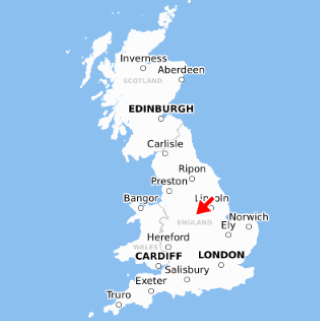The Denby Pottery, UK, reinvents itself!
What does a 200 year old English pottery works have to do with an addictive Korean series on Netflix called Squid Game? Well, not much you would think, I am sure……..
But this is a classic story of re-invention and finding lucrative new markets, with a little bit of star dust thrown in for good measure!
Denby Pottery Company Limited was named after the Derbyshire village in England where it was set up by Joseph Bourne in 1809.

Like so many of the English potteries I have written about previously, (click the Tag Cloud link here to read any of them), Denby Pottery was enormously successful in the 19th century and the first half of the 20th century, building and diversifying its production, and taking over other nearby potteries to increase it’s capacity.
The company was positioned near a rich seam of clay which was fully exploited by Joseph Bourne and later, his son. Using a new patent process for drying slip invented by Needham and Kite of Vauxhall, the pottery produced at least 25 tons of workable clay each day. 1
In the nineteenth century most of the ware produced was salt-glazed stoneware. Bourne patented improved kilns for stoneware in 1823 and 1848. By the 1870s the pottery was producing a wide range of utilitarian stoneware products including telegraph insulators, ink bottles, pickle and marmalade jars, spirit and liquor bottles, foot warmers, churns, mortars and pestles, pipkins, feeding-bottles, pork pie moulds, druggists' shop-jars, snuff-jars, spirit-barrels, pudding-moulds, and water filters. They also made more decorative "hunting jugs" sprigged with moulded decorations of huntsmen, windmills, men smoking or beehives, sometimes with the handle in the form of a greyhound, and terracotta goods, both practical and decorative.1 The company further diversified into glassware, metal utensils and porcelain.





But as we know, tastes and usages change, and by the 1970s, its illustrious heritage was down to a range of just three bowls! The company went into receivership in 1987, and was bought out numerous times over the ensuing years.
Finally, in 2009, it was saved from extinction by an investment company called Hilco Capital. It spearheaded the exploration of new markets in Asia and India to try to turn the business around. Now, the range is greatly expanded. Hilco took the trouble to understand what the young Asian people want today. Hilco identified that young people want their own identity, with tableware that is practical and utilitarian, not the ornate bone china of previous generations.
Apart from understanding the demographics, their target market numbers make sense. For example, in South Korea alone, there is a population of 55 million. Hilco understand the culture very well. They know that the table is set very differently in Korea compared to the Western world, and a lot of bowls are used. Today the collection includes over 40 bowl designs alone - nesting pots, straight-sided rice and deep ramen noodle bowls, small round dishes as well as soju cups in which to serve Korean alcohol. 2



Hilco decided to sell the company in 2014, but changed their mind as it was doing so well! So well, in fact, that they opened a shop in Gangham, a district of Seoul (made famous in 2012 by the world wide popularity of the dance song: Gangham style.)

Then in 2021, a particular style of their pottery, called The Halo teacup, was used in an enormously popular Netflix series in Korea called Squid Game.
(The story line of the series is, (in brief), that hundreds of money hungry players risk their lives to compete in a series of children's games. If they win, they will walk away with billions of dollars. What they don't know, however, is that every game has a deadly twist ....) 3
It gained such a cult following during lockdown that a second series is now proposed!

As is often the case, this blockbuster series catapulted Denby Potteries into instant fame as a "must have" brand. So much so that the television programme Inside the Factory visited the Denby factory in 2021 to document the journey of a Halo Heritage mug, and was broadcast on 2 February 2022!
The pottery style hasn’t changed much from its original design, as you can see if you look at the Denby website today: click here. The Denby collection today is concentrated on homewares and glassware, continuously produced in Derbyshire for over two hundred years.
Sebastian Lazell, the Denby chief executive, told The Times newspaper that Hilco was delighted at the sustained progress of its investment and was keen to ensure that the positive trajectory continues. “Denby Pottery, our investors and advisers are, therefore, reviewing options for the future ownership of the Denby Group, potentially involving the support of investors better suited to the increasingly international needs of the business in the years ahead.” 2
That future ownership comes at a valuation reported to be approximately £50 million.
Not bad for a 200 year old, continuously producing English pottery that was down to a range of just three bowls!

Late Mail
G.B. in Australia has just signed up to receive the AnArt4Life blog post each day. We send him a very warm welcome and trust that he will enjoy the servings of art we have planned for the coming months.
Footnotes
- Wikipedia
- Caroline Davies article, The Guardian, 25th July 2022
- US Magazine.com
